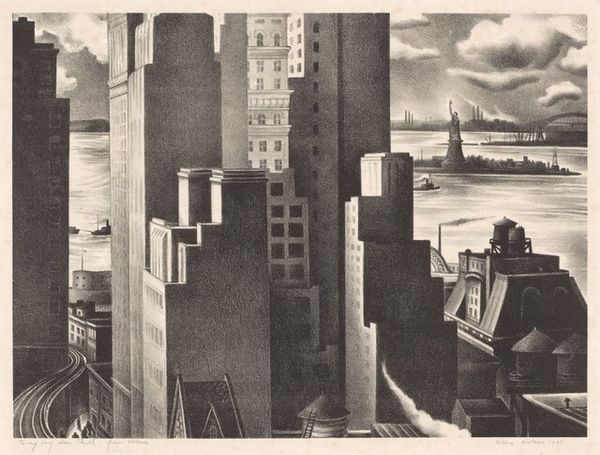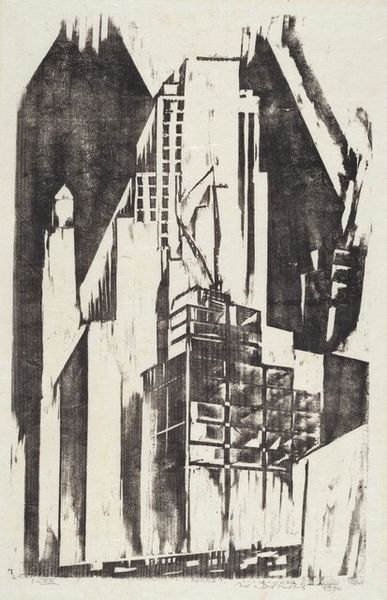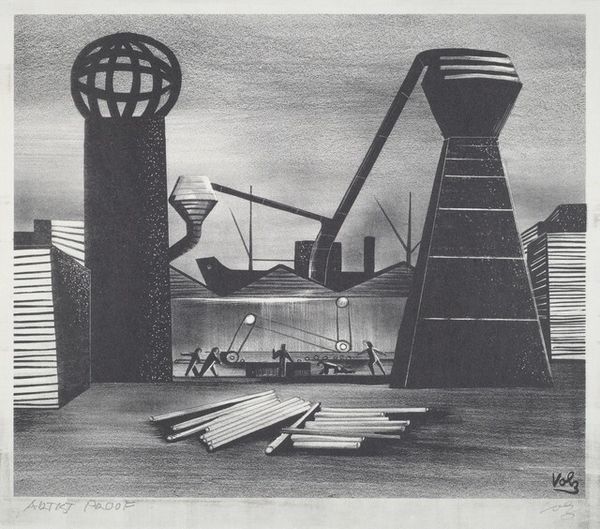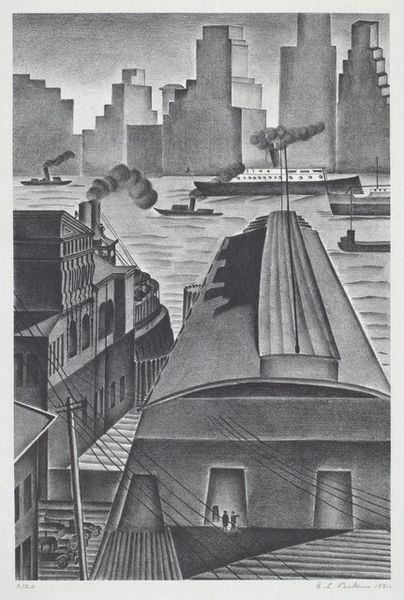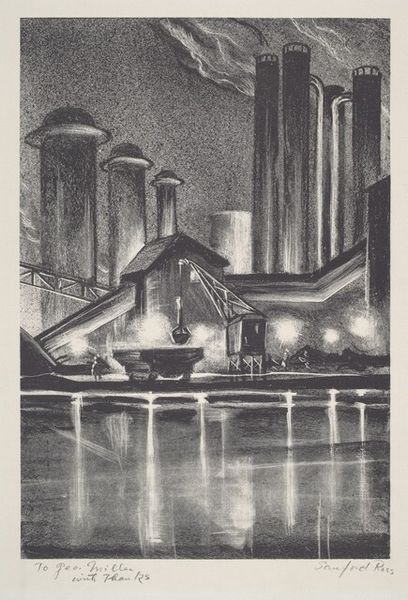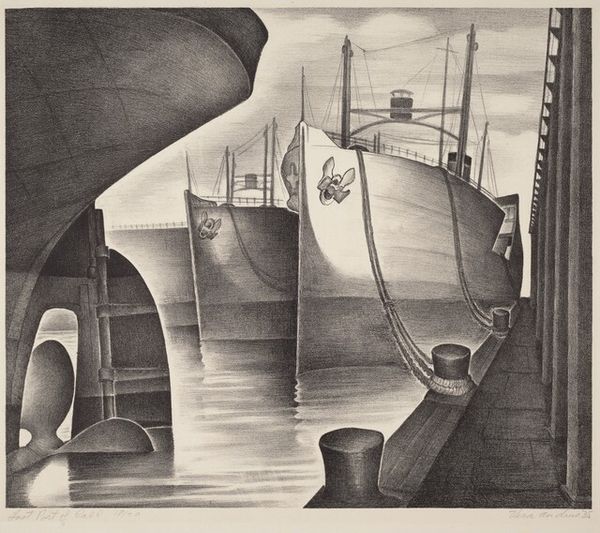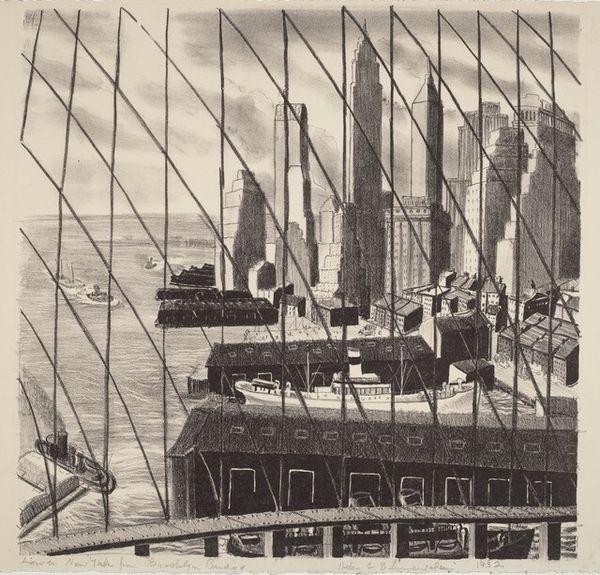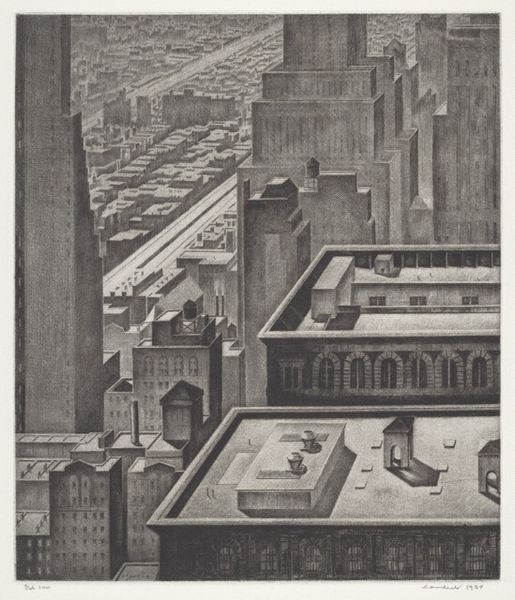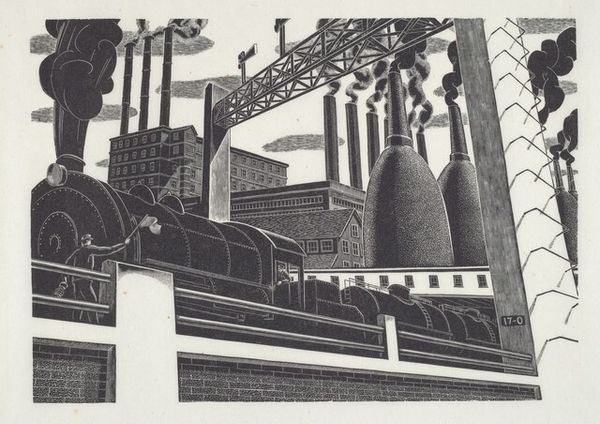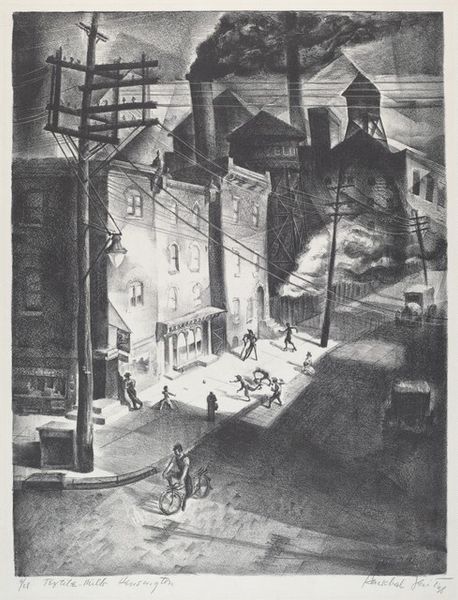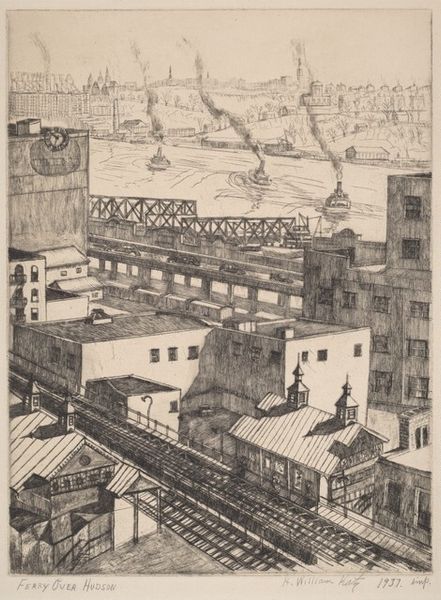
drawing, print, pencil, graphite
#
precisionism
#
pencil drawn
#
drawing
# print
#
pencil sketch
#
old engraving style
#
pencil drawing
#
geometric
#
pencil
#
graphite
#
cityscape
#
modernism
#
realism
Dimensions: Image: 277 x 380 mm Sheet: 400 x 548 mm
Copyright: National Gallery of Art: CC0 1.0
Curator: Barbara Morgan’s 1934 print, "Hudson River at 34th Street," is before us. The piece is rendered in pencil or graphite, offering a stark yet intricate view of New York’s industrial waterfront. Editor: The first thing that strikes me is its geometric starkness—those angular buildings and bridges create such a rigorous composition. It’s a cityscape stripped down to essential forms. Curator: Indeed. The image participates in a modernist impulse. Consider how the vantage point and subject matter of urban infrastructure is reflective of her artistic involvement with leftist artistic circles in the 1930s. What statements can you find of this landscape’s connection to the socio-political tensions and cultural ideologies of the time? Editor: Well, focusing on the image's structure, notice how she uses contrasts of light and shadow to give a almost theatrical feel. Also, there’s an almost obsessive attention to detail, an articulation of lines, in both the foreground rooftops and the distant skyline, which lends a hyperreal quality to an otherwise bleak industrial scene. It brings to mind similar effects in Surrealist film. Curator: Interesting to look at the industrial scene that way. Many believed industrial progress was supposed to usher in an era of prosperity, so, within its original context, you wonder what this image meant. Do you see celebration? Pessimism? Editor: Perhaps both, coexisting in tension. From a purely formal viewpoint, the sharp angles and the repetition of vertical lines creates a feeling of, say, organized chaos. So the very construction of the image speaks to an unstable reality and an attempt to contain it, even control it. Curator: Which allows it to then raise crucial questions about American identity, class, and power. How does such an industrial landscape mirror a shift in values? Does its aesthetic treatment question this transformation? Editor: Seeing it as you've framed it, it's a composition full of unanswered questions, suspended between observation and social critique. Curator: A pertinent reflection; Morgan's perspective provides a crucial insight into the dialectic complexities between industry and identity. Editor: I concur. Shifting from purely aesthetic judgments to include social and historical contexts does enrich the experience of this image.
Comments
No comments
Be the first to comment and join the conversation on the ultimate creative platform.
